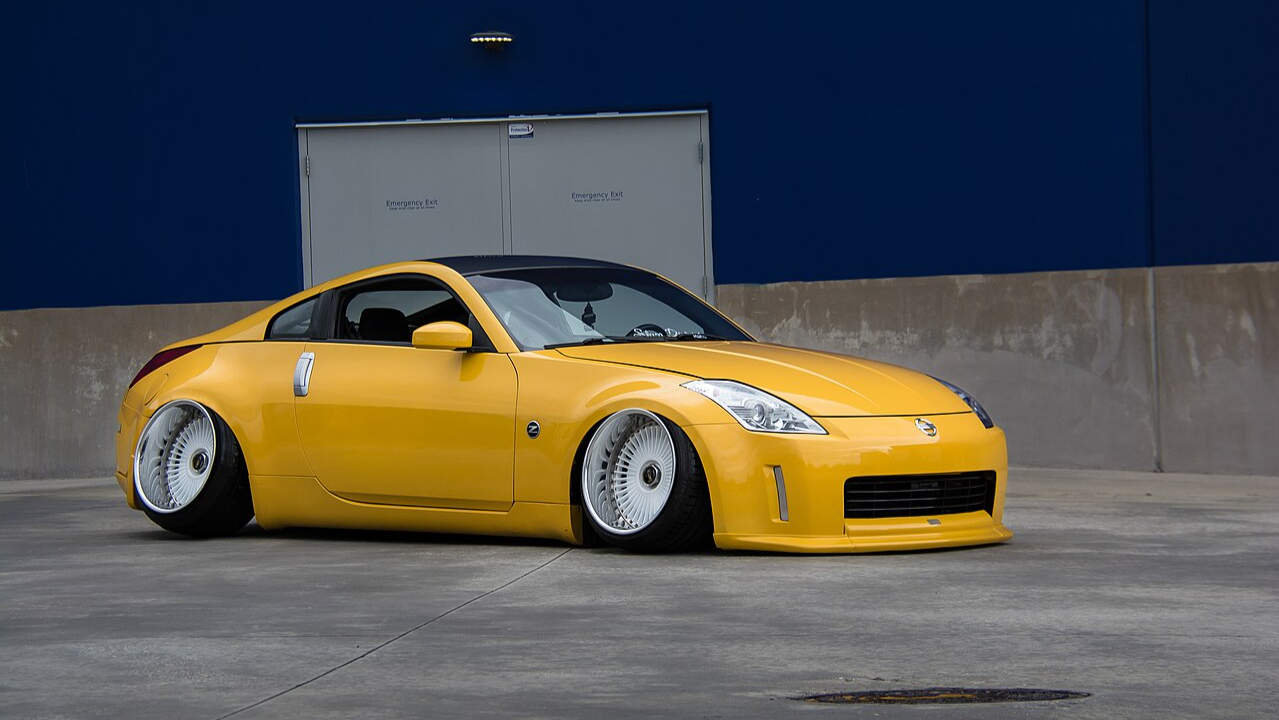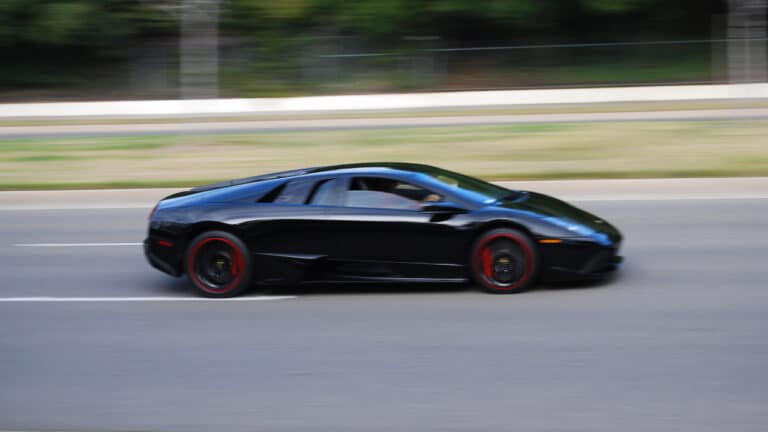13 Wild Car Mods Pushing the Legal Limits

The art and science of tuning cars to milk more performance out of them and/or enhance or alter their looks are as old as the history of automobiles. Enthusiasts have been doing it since the early 20th century. The practice was particularly popular among racers seeking a competitive edge on the track.
Actor James Dean had his Porsche 550 Spyder tuned for racing in 1955, but that was decades after the hot rod culture emerged in the United States during the 1920s and ‘30s. They were modding the Ford Model T and later the Model A, often stripping them down almost to the bones to shed weight and install punchier engines.
Indeed, the modding scene has vastly diversified in the 21st century, birthing subcultures like drifting, stance, and time attack. Enthusiasts go to great lengths to express their individuality, but the question is, how far is too far? Here are some extreme or controversial mods that probably shouldn’t be legal.
Excessive Lift Kits

Suspensions and body lifts raise the vehicle’s ride height above the original factory specifications. Off-road enthusiasts often do it to increase ground clearance and compatibility with larger tires.
The problem is modders sometimes get carried away and raise the suspension excessively high, inadvertently worsening the vehicle’s stability and handling.
Excessive lift kits are questionably legal because they increase a vehicle’s rollover risks, putting passengers and other road users in danger. Additionally, lift kits often impair a vehicle’s braking performance due to the altered weight distribution suspension geometry.
Straight Pipe Exhausts

Why do modders take out the muffler and sometimes the catalytic converter to create a “straight pipe” exhaust system trailing directly from the engine to the car’s rear? They do this primarily to achieve performance gains and a more aggressive exhaust note.
However, this is an insane mod that many people would be wildly surprised to learn is not against the law in many jurisdictions. Besides generally being a nuisance on the road with drastically raised noise levels, the removed CAT increases emissions.
Additionally, backpressure loss due to the ‘lost’ CAT counters whatever performance gained. Ultimately, everyone’s well-being, especially in quiet, residential neighborhoods, should be the priority.
Underglow Lighting

It sounds like a harmless, even childish vanity until you recognize the serious risks they pose to other drivers on the road. Those neon lights embedded under the car to create a colorful glow effect can cause accidents because they are highly distracting. Despite this, LED underbody lighting is legal in many regions.
If not securely mounted, the lights and wiring can come loose and pose electrical risks on the road. Modders should also consider that underglows often require tapping into the car’s electrical system.
You risk overloading the system and blowing a fuse or other electrical malfunction if not done right. Jurisdictions like Maine and Pennsylvania only allow this mod at car shows where they rightly belong.
Tinted Windows

We love window tints for various reasons besides the fact they look cool. We dig the privacy, UV protection, and heat reduction, but extremely dark tints border on insane, and that’s not just because the film makes it harder for cops to see into the car right away. They can impair the driver’s visibility, too, especially in low-light conditions.
If the driver struggles to see other road users, it defeats the entire purpose of window tints. And there’s the quality of the tint to consider. If done by an inexperienced hand, you could get bubbling, peeling, or discoloration results over time. Go for a sensible window tint level, even if you live in places with lax regulations on tint levels.
Nitrous Oxide Systems (NOS)

This one is a favorite of performance freaks and gearheads with a need for speed. The mod involves a setup that injects nitrous oxide (N2O) into the engine to achieve a significant, albeit temporary hp and torque boost, thanks to the additional oxygen molecules for combustion.
As you can imagine, the system involves introducing gas into an engine’s intake system – a highly dangerous mod if not done right. It comes with risks such as overheating, detonation, or component failure, yet legal restrictions on using NOS mod on public roads remain lax in some areas.
Loud Aftermarket Horns

This one may not involve removing a catalytic converter, but a nuisance is a nuisance, and people get arrested for public disturbance. So, how come there often aren’t specific laws against installing and using exceedingly loud aftermarket horns in some regions?
Even when the honk is musical to evoke a sense of playfulness, they can be startling, and there’s no telling how dangerous that can be on the road, residential, or commercial areas. Besides generally being a nuisance, you risk hearing damage from prolonged exposure to loud noise. Thankfully, many US states limit horn loudness to about 110 decibels.
Hydraulic Suspension Systems

Mrs. Pinkman in Breaking Bad thought Jesse’s 1982 Chevy Monte Carlo was “stupid” because it was a “bouncing car.” She was glad he’d finally ditched it for a weather-beaten red 1986 Toyota Tercel acquired at a junkyard.
This unlikely comparison reveals the heights of Mrs. Pinkman’s (and many other people’s) disapproval of cars that behave like Jesse’s ‘bouncing’ Monte Carlo. Besides the distractions they cause on the road, ‘bouncing’ cars pose various safety hazards and shouldn’t be legal in many places allowing it.
Using pressurized hydraulic fluid to manage and adjust the suspension’s height and firmness can improve ride quality but has drawbacks, including leaks and impaired handling.
Bull Bars and Brush Guards

This is one of the most controversial car mods that remain legal in many locales. Often adopted by off-road enthusiasts, bull bars make a car, SUV, or truck look more badass and better suited for extreme off-roading. However, these vehicles don’t live in the forests and woods because they have bull bars and brush guards.
They’re driven just as often on regular roads, and you don’t want to be involved in a collision with a vehicle fenced with aluminum, plastic, or iron bars.
The worst part is that the collision may not be with another vehicle but with pedestrians, yet bull bars remain legal on regular roads in many jurisdictions. Besides other road users, these things increase the risk of injury to passengers in an accident because they interfere with the deployment of airbags and other safety systems.
Massive Spoilers and Wings

They’re not as controversial as bull bars and brush guards, but oversized spoilers can be just as dangerous. While they can make your car look sportier and more aggressive, the entire enterprise seems ultimately insane and not worth the resources if they don’t have any meaningful aerodynamic benefits.
Installing massive spoilers and wings on a daily driver primarily driven on busy city streets doesn’t make much sense except to obstruct the driver’s rearview and potentially pose a safety hazard for other road users.
These things are for driving at speeds much higher than typical road limits, yet they’re often allowed on public roads. Additionally, poorly designed or incorrectly installed aftermarket wings and/or spoilers can be counterproductive, creating drag instead of downforce.
Decibel-Boosting Audio Systems

Like loud horns, significantly loud car audio systems should be flat-out outlawed in every state and city. It’s unacceptable to let people disturb the peace and distract drivers with their high-powered audio systems.
Unless there’s a car audio competition, blasting loud music in the neighborhoods and streets is not a lifestyle approved by even true audiophiles. Thankfully, many jurisdictions have laws regarding permissible noise levels in public spaces, often between 70-90 dB during the day and lower at night.
You also have to consider the impact on your hearing health. The National Institute for Occupational Safety and Health (NIOSH) recommends not exposing yourself to sounds above 85 dB for more than 8 hours a day. The safe exposure time halves for each 3 dB increase.
Engine Swaps

We don’t think engine swaps is a fundamentally insane mod. However, insanity is when people swap in a much more powerful engine than the vehicle’s design. It’s also insane that this highly critical mod often passes with minimal regulation.
Depending on the engine and compatibility, the swap can be straightforward or require more complex overhauls. There are many reasons why a swap may be necessary, including improved fuel economy, power, performance, and reliability. Thankfully, many regions enforce strict emissions laws.
Stretched Tires

This mod involves installing tires that are narrower than the wheel, which stretches the tire’s sidewall to fit the width of the wider wheel. This wheel treatment is particularly popular with ‘low-riding’ enthusiasts who love to show them off at VIP car scenes. However, this mod is inherently problematic.
Stretching tires like that impair the vehicle’s handling, to say the least. It compromises the tire’s structural integrity and ability to absorb impacts. They wear faster due to the improper distribution of forces, and the altered profile is often bad for the car’s handling capabilities, especially during cornering.
Camber Kits

These are aftermarket suspension kits modders use to adjust the camber angle of their vehicle’s wheels. There are negative and positive camber. Positive is when the top of the wheels is adjusted to tilt outwards, while negative is when the wheels tilt inwards.
The latter is often the choice for modders looking to achieve enhanced cornering performance by increasing the tire’s contact patch while cornering. However, tilting the wheels excessively inward is dangerous and bad for tire health. Positive camber is more popular with off-road enthusiasts.





